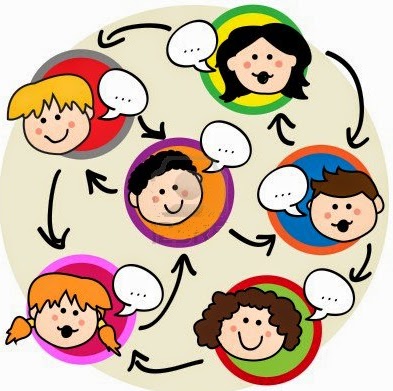Language learning in people with Down syndrome occurs in childhood and continues through adolescence. Some children learn language more quickly than others and this is due to two main factors: the frequency with which their parents communicate with their children and the style of communication they use.
We have to keep in mind that in the act of communication, only 10% is verbal; the rest is non-verbal communication. This tells us that we should pay attention to gestures, expressions, form and not just words. Communication is two-way, and does not always involve talking. There are different modes of communication, so it is important to pay attention to non-verbal language. A child is expected to have a minimum of 50 interactions per day.
Different communication styles that parents often use with their children:
1) Directive style: In this style the parent, adult, or caregiver seeks to be in control of everything the child does and to control the situation. When we use this style, we ask too many questions, or we constantly give orders, or we explain absolutely everything step by step. It is the style most used by parents, with or without children with Down syndrome.
2) Encouraging style: Those who encourage their son or daughter constantly and want them to do many things, to ask questions, to be agile… in this case the encouraging adult is the one who communicates the most and gives the child little time to respond.
3) Time-keeping style: The parent is on a tight schedule and is anxious to wake up, have breakfast quickly, leave early… all the time he/she is thinking that something must be done and in an order that is already arranged and quick. What they are most interested in is that the child does things quickly so as not to be late.
4) Quiet style: The adult does not speak, does not respond… leaves the child to speak, to look at him/her. The adult observes, supervises, but does not interact.
5) Helping style: The adult becomes the child’s helper: he/she answers for him/her, packs his/her backpack, picks up his/her toys, puts his/her clothes away… The adult believes that he/she can do it better since the child is not capable of doing it.
6) Receptive style: This is the style in which the adult puts him/herself on the child’s level. He/she communicates with the child according to the child’s needs. If the child communicates with a gesture, the parent responds with a gesture; if the child communicates with eye contact, the parent also uses eye contact: The adult neither speaks for the child, nor gives orders, nor asks questions, nor celebrates each of the child’s actions. He simply enjoys the moment with his child.
The ideal is to seek this receptive style of communication with children. To do this, we can follow these tips:
- Select the level of language based on the child’s ability to understand language and not on his or her ability to produce it. To communicate, it is necessary to use language that everyone can understand. It is important to adapt to your child’s needs: it can be using images, gestures, movements… It is important to maintain eye contact in order to understand our children. It is also important to respect the time of response. This is a waiting time in which our children are processing the information. In some children this response time may be faster than in others.
- These parents have realistic goals in their communication.
- These parents pay more attention to the content of the message in what the children want to say, and less attention to the form. The length of sentences and new vocabulary should be tailored to the needs of the child and not the adult. The focus should be on the children’s abilities and strengths.
- Offer varied and frequent experiences outside the home. Many things are learned at home: routines, bedtime routines, promoting independence and autonomy… but children are also made to go out and interact outside of the house. Getting to know the outside world and interacting with all kinds of external elements enriches them. So, they apply what they have learnt at home, outside the home. They also learn new vocabulary, new phrases, how to communicate with others… and parents also assess what vocabulary they should teach according to the new situations that arise with their children.
Keep in mind the importance of non-verbal communication when talking to your child with Down syndrome. Be patient in trying to understand their message, what they want to say. There is no magic pill that will make children communicate faster, speak faster or clearer. Enjoy all the moments along the way that make children develop properly.

















